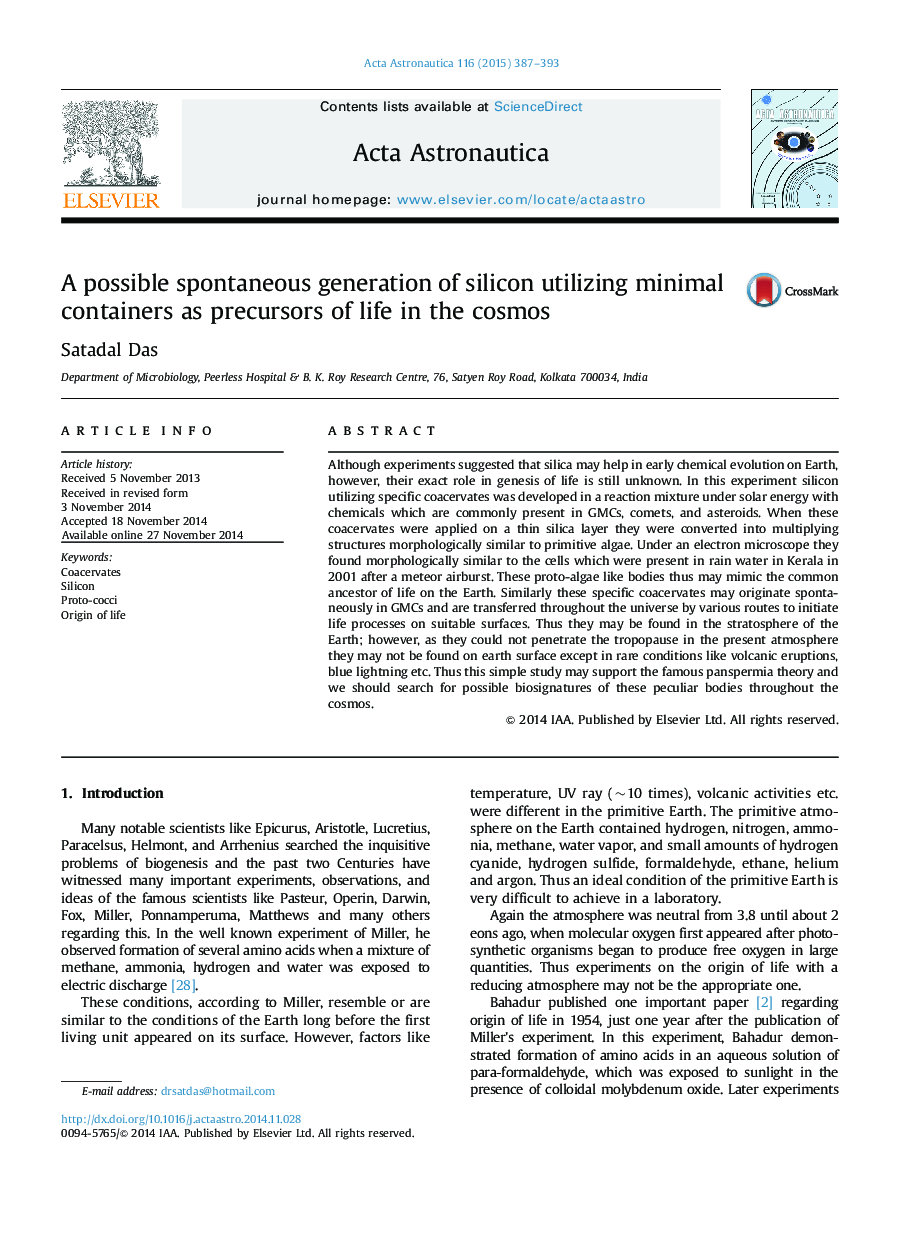| کد مقاله | کد نشریه | سال انتشار | مقاله انگلیسی | نسخه تمام متن |
|---|---|---|---|---|
| 1714312 | 1519938 | 2015 | 7 صفحه PDF | دانلود رایگان |
• Salt-silicate-molybdate-formalin medium was prepared with chemicals detected in outer space.
• Coacervates originated in the salt-silicate-molybdate-formalin medium in sunlight.
• These coacervates form multiplying proto-cocci on glass surface with thin algae medium.
• The whole process may indicate a possible way of origin of life in the cosmos.
Although experiments suggested that silica may help in early chemical evolution on Earth, however, their exact role in genesis of life is still unknown. In this experiment silicon utilizing specific coacervates was developed in a reaction mixture under solar energy with chemicals which are commonly present in GMCs, comets, and asteroids. When these coacervates were applied on a thin silica layer they were converted into multiplying structures morphologically similar to primitive algae. Under an electron microscope they found morphologically similar to the cells which were present in rain water in Kerala in 2001 after a meteor airburst. These proto-algae like bodies thus may mimic the common ancestor of life on the Earth. Similarly these specific coacervates may originate spontaneously in GMCs and are transferred throughout the universe by various routes to initiate life processes on suitable surfaces. Thus they may be found in the stratosphere of the Earth; however, as they could not penetrate the tropopause in the present atmosphere they may not be found on earth surface except in rare conditions like volcanic eruptions, blue lightning etc. Thus this simple study may support the famous panspermia theory and we should search for possible biosignatures of these peculiar bodies throughout the cosmos.
Journal: Acta Astronautica - Volume 116, November–December 2015, Pages 387–393
